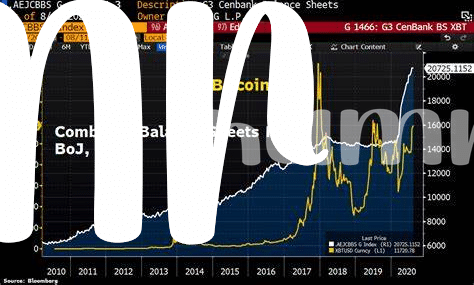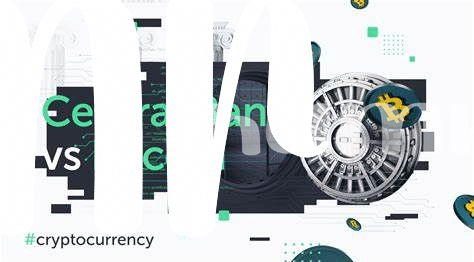What Are Central Bank Digital Currencies (cbdcs)? 🏦

Imagine a world where your money doesn’t just sit in the bank, but is the bank—well, sort of. Enter Central Bank Digital Currencies, or CBDCs for short. These aren’t your regular digital transactions like paying through your phone or online shopping. No, CBDCs are a whole new breed, minted and managed directly by a country’s central bank. Think of them as the digital twin of the coins and notes in your wallet, but instead of carrying them around, they live in your digital wallet. This means they’re super official, kind of like the digital version of physical money but backed and issued by the big bosses—the central banks.
Now, why is this a big deal? Well, CBDCs come with the promise of making transactions faster, cheaper, and more secure. They could change the way we think about money, making it easier for governments to distribute funds during times of need, like helping folks out during a crisis or rebuilding after a disaster. But perhaps the most exciting part is the potential to include everyone in the banking system, especially those who, for various reasons, can’t open a traditional bank account.
| Feature | Description |
|---|---|
| Issuer | Central Banks |
| Form | Digital |
| Purpose | Speedier, more inclusive financial transactions |
| Benefits | Lower costs, Enhanced security |
Understanding Bitcoin’s Unique Place in Digital Money🪙
Bitcoin dances to its own beat in the bustling ballroom of digital money. Think of it as the original mover, the one that started the whole digital currency party. Unlike the newcomers, Central Bank Digital Currencies (CBDCs), which are like the official stamps of approval from governments and central banks, Bitcoin operates on its own terms. It’s decentralized, meaning no single party is in charge, making it a unique piece of the financial puzzle. As we explore how CBDCs might influence Bitcoin’s value, it’s crucial to consider Bitcoin’s pioneering role in creating a whole new way for money to exist and move around the world. This autonomy and freedom from traditional financial systems have attracted a community of users and investors who value privacy, security, and the potential for growth. For those interested in diversifying their investment strategy, https://wikicrypto.news/portfolio-diversification-with-bitcoin-futures-a-strategy-guide provides a deeper look into how Bitcoin can fit into a broader portfolio. This revolutionary approach to money has set the stage for exciting developments, as we continue to witness the evolving relationship between digital currencies like Bitcoin and emerging CBDCs.
How Cbdcs Might Influence Bitcoin’s Value 📉📈

Imagine central banks around the world starting their own digital piggy banks, kind of like having special online wallets everyone can use, not just for saving but for everyday shopping and payments too. These are what we call Central Bank Digital Currencies (CBDCs) 🏦📲. Now, think of Bitcoin, the digital gold, already out there in the cyber world. With the introduction of these official digital wallets, people might start to look at Bitcoin differently. The big question is whether these shiny new CBDCs could make Bitcoin sparkle even more or lose some of its luster 🤔. Since CBDCs come with the trust and backing of the government, some folks might lean towards them, thinking they’re safer or more stable. But on the flip side, those who love Bitcoin for its freedom from central control might cherish it even more, driving its value up ⬆️⬇️. It’s like a seesaw in the digital playground, with CBDCs on one side and Bitcoin on the other, constantly influencing how high or low Bitcoin’s popularity and value might soar or dip.
Will Cbdcs Make Bitcoin More or Less Attractive? 💡

Imagine walking into a store and picking between two candies. One is your tried-and-true favorite, while the other is a shiny new option with a label that says it’s made by the government. That’s a bit like the decision between Bitcoin and Central Bank Digital Currencies (CBDCs). On one hand, Bitcoin has been the go-to digital gold for years, known for its freedom and independence from traditional bank controls. On the other, CBDCs come with the promise of stability and trust, backed by national banks. This new kid on the block could change how people view Bitcoin, making it seem either like a relic of the past or solidify its status as the digital currency of choice for those seeking alternatives to government-backed options.
As folks navigate these waters, they’ll be weighing aspects like safety, ease of use, and, importantly, privacy. Bitcoin’s allure has always been its ability to operate outside the conventional financial system, offering a level of anonymity that CBDCs are unlikely to match due to regulatory requirements. There’s a narrative unfolding where Bitcoin could either shine brighter as a beacon of financial freedom or find itself sharing the spotlight with a more regulated, perhaps less exciting, alternative. For those curious about navigating these changes and understanding the impact on Bitcoin’s value, bitcoin controversies investment strategies offers insightful perspectives.
Privacy and Security: Bitcoin Vs. Cbdcs 🔐
When it comes to keeping our money safe and private, we’re all looking for the best option. Imagine two treasure chests: one is Bitcoin, shining with its promise of keeping your gold away from prying eyes in a land governed by the people. The other is Central Bank Digital Currencies (CBDCs), safeguarded by the kingdom’s guards, promising protection but under the watchful eye of the king. Now, Bitcoin is like a secret cave; only you know the path in, making it really hard for others to sneak a peek at your treasure. But, there’s a catch – the cave’s location is yours to protect. On the flip side, CBDCs are like storing your gold in the royal vault. Sure, it’s safe, but the king decides when and how you can use it, not to mention the royal scribes keeping a record of every coin.
The table below outlines key differences in their approach to privacy and security:
| Aspect | Bitcoin | CBDCs |
|---|---|---|
| Privacy | High – Users have control over their transaction information. | Lower – Transactions can be traced by the issuing authority. |
| Security | Depends on user measures. | High – Backed by government security protocols. |
In this digital age, choosing where to store your treasure boils down to a trade-off between the freedom offered by Bitcoin and the structured safety provided by CBDCs. While Bitcoin puts you in the driver’s seat, CBDCs come with the assurance of regulatory safeguards, albeit at the cost of some privacy.
The Future Relationship between Cbdcs and Bitcoin 🚀

As we look ahead, the dance between Central Bank Digital Currencies (CBDCs) and Bitcoin seems set for some interesting twists and turns. On one hand, CBDCs, with their official backing, could introduce a level of stability and trust that might attract those who’ve been sitting on the digital currency sidelines. However, the very essence of Bitcoin – its independence from traditional financial systems, its global nature, and its built-in privacy and security features – means it will likely continue to hold a unique appeal for a significant segment of the digital currency market. In this evolving financial landscape, it’s conceivable that the two could coexist, serving different needs and preferences. After all, the promise of CBDCs to streamline financial operations globally doesn’t necessarily diminish the value proposition of Bitcoin as a decentralized alternative. What’s more, for those looking to deepen their engagement with the world of digital currency through informed investment strategies, exploring bitcoin community projects investment strategies could offer valuable insights into how Bitcoin’s role might evolve in the face of this new competition. As we navigate the future, the relationship between CBDCs and Bitcoin will undoubtedly continue to be a focal point of innovation, challenge, and opportunity 🌐💼🚀.
